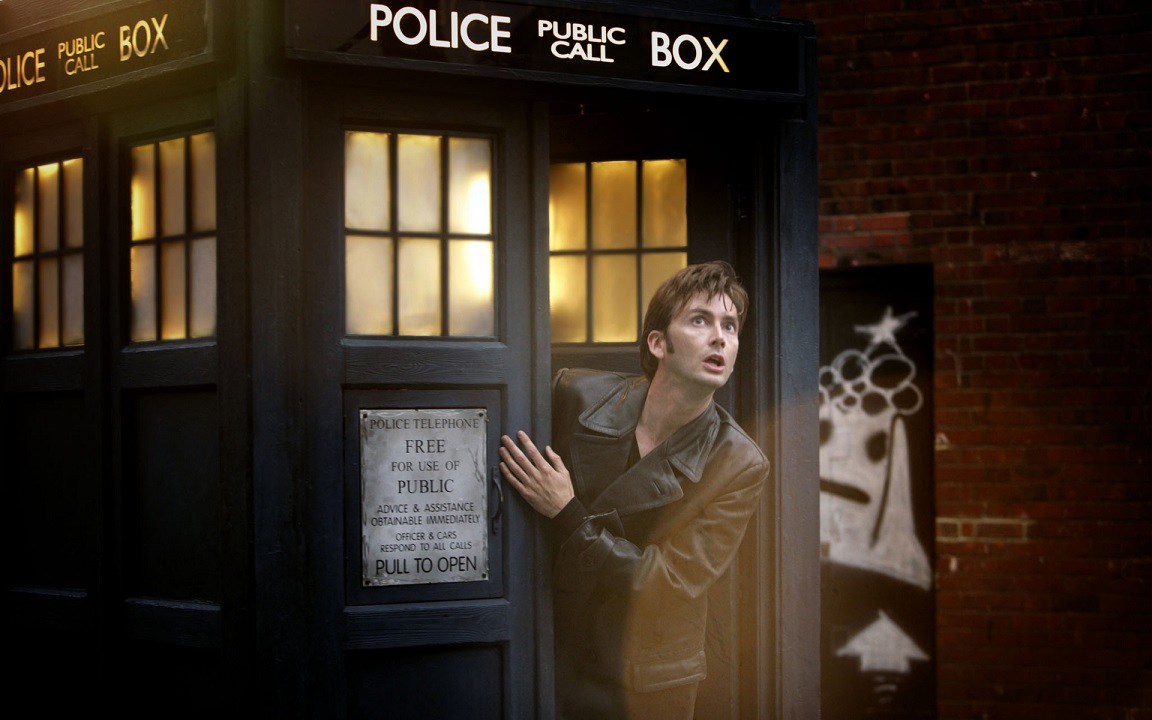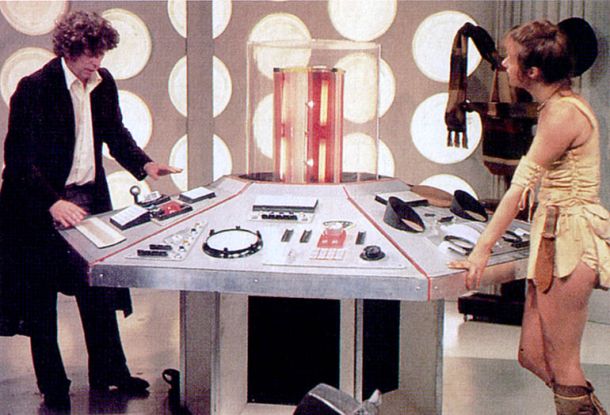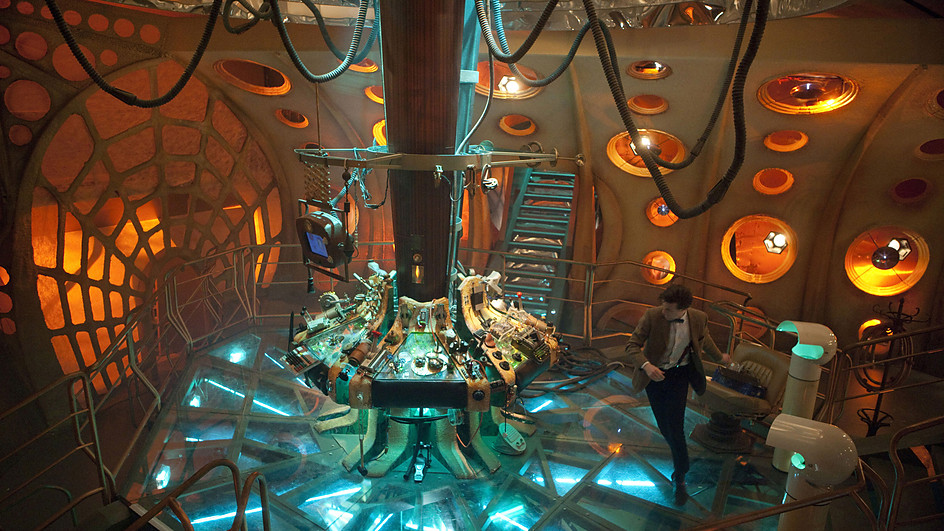On “Doctor Who,” what is the TARDIS?
Quick Answer: The TARDIS is the spacecraft of The Doctor, the protagonist of BBC’s long-running series Doctor Who. The craft is both a spaceship and a time-traveling device capable of going to any destination in space or time. Typically able to blend in with any environment, The TARDIS has a broken “chameleon circuit,” thus keeping it stuck in the shape of an 1960s British police telephone box, the last shape it took before the circuit broke.
People who aren’t science fiction fans probably wonder why so many geeks are into British telephone boxes. The TARDIS is one of those iconic props of science fiction which blends seamlessly with the mainstream. The Enterprise is obviously a futuristic space vessel. The TARDIS, on the other hand, looks like a real-world object. Of course, the major difference between a 1960s British police telephone box and The TARDIS is that one is an inter-dimensional time-traveling spacecraft, and one… well, makes telephone calls and likely houses old bits of chewed gum.
TARDIS is an acronym for Time and Relative Dimension in Space. It is the traveling vessel of The Doctor, the time-traveling, two-hearted, godlike body-morphing protagonist of Doctor Who (1963 - ). He initially took the unit from his home planet of Gallifrey, residence of the Time Lords, and uses it to go all about the universe in time. The TARDIS is effectively the fastest science fiction ship ever conceived, as it travels from between distances and time with relative instancy.
If that weren’t cool enough, The TARDIS is dimensionally transcendental, which is fancy talk for “bigger on the inside.” Much like the camping tent the Weasleys pitched during the Quidditch World Cup, the TARDIS has substantially more interior space than its exterior might suggest.
The Time Lords are an extraterrestrial civilization with advanced technology. The TARDIS is also semi-sentient with its own degree of sapience, and provides its user with various tools like telepathy-based language translation.

The 10th Doctor, David Tennant, leaves the TARDIS
As to why it is shaped like a police box, the Doctor Who website explains, “In the very first story it was established that the TARDIS usually changes its exterior appearance on each trip to blend in with its surroundings. The Doctor later stated that it was the broken chameleon circuit that caused it to be stuck in the shape of an old style police box.” His TARDIS is thus somewhat unreliable and obsolete. There is a comedic irony to this massively advanced piece of technology simultaneously being an obsolete piece of junk that frequently breaks down. Its tendency towards malfunction also adds to the drama of the show, sticking The Doctor in situations, time, or places where he didn’t intend to be. The shoddy TARDIS also makes the necessity of performing physical repairs a recurring plot device. The TARDIS is also designed to be simultaneously piloted by six Time Lords, but The Doctor controls it on his own, which can cause trouble.
While it was long-believed that the TARDIS’ derelict state allowed it to be stolen by The Doctor while the unit sat on Gallifrey as spare parts, the 2011 episode “The Doctor’s Wife” finds the TARDIS’ consciousness inside a human female body, and she reveals that she wasn’t stolen but left of her own will. Indeed, she claims to have “stolen the Doctor” more than he stole her.
The TARDIS has become an iconic figure in British culture. Google even built an Easter egg into their maps system by taking advantage of one of the few police boxes still present on London streets. Click here to wander around Earl’s Court in London and navigate over to the old police box still present on the sidewalk. Moving to its front takes you inside, where you can virtually tour the ship’s interior.
The inside of The TARDIS has been changed many times throughout the decades of Doctor Who, the assumption being that it suits itself to the personal tastes of each of the Doctor’s physical iterations. The oldest 1960s boxes looked very much of that era, with a Dr. Evil’s lair-like presence about them. As the years passed the box modernized with the times, evolving into the festival of metal and light it is today.

The 4th Doctor, Tom Baker’s TARDIS, 1974-1981

The 11th Doctor, Matt Smith’s TARDIS, 2010-2013
The exterior has also changed over time, but not as dramatically, as it always resembles a blue police box. The position of the light on top and the shade of blue paint are among its most dramatic changes.
The TARDIS is one of the more clever transformations of a regular, everyday object into an emblem of science fiction. As the popularity of Doctor Who continues to grow, it will remain exciting to see new versions of the device evolve with each new version of its pilot.

